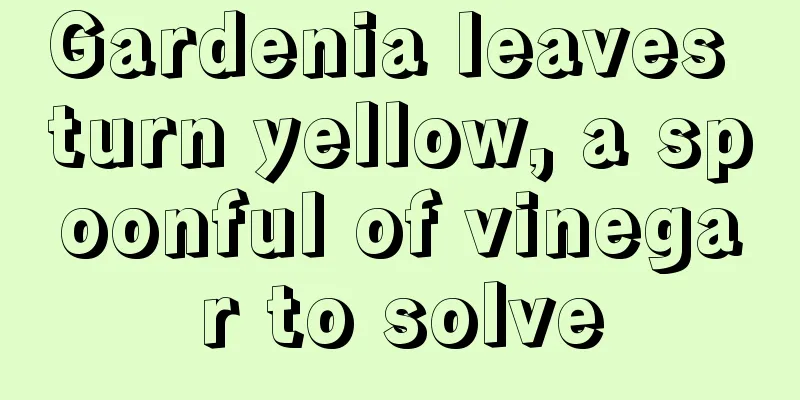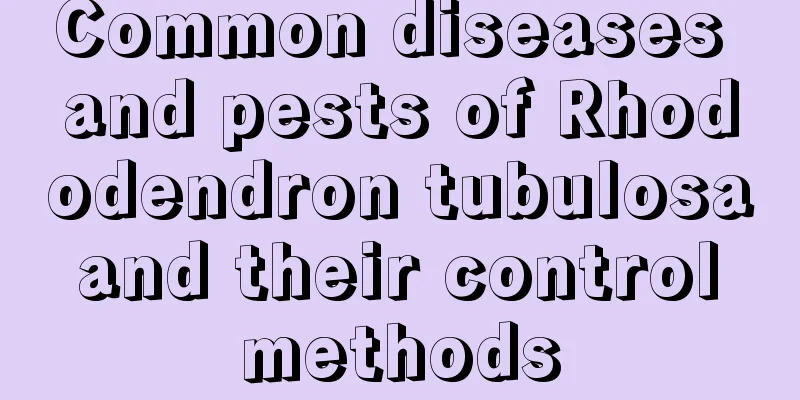Gardenia leaves turn yellow, a spoonful of vinegar to solve

|
Friends who often grow gardenias in the north may know that its leaves are very prone to turning yellow. This is mainly because gardenia is originally a southern plant and prefers acidic soil, but the soil and water in the north are generally alkaline, so it will lead to the problem of yellow leaves. But this problem is actually very easy to solve. Just a spoonful of vinegar is enough. So how should you use this spoonful of vinegar? Let’s learn more about it below. Gardenia leaves turn yellow, a spoonful of vinegar to solve If the yellowing leaves of gardenias are indeed caused by soil pH problems, you can dilute a spoonful of balsamic vinegar with water (the concentration can be thinner, generally 200 times dilution is enough) and pour it into the roots of the gardenia. Do this every three days. Using it several times in a row can overcome the yellowing leaves caused by soil alkalinity. Precautions for watering gardenia with vinegar 1. Choice of vinegar Before watering your gardenia with vinegar, make sure the vinegar you are using does not contain salt. Salt is a big taboo in growing flowers. Salt will absorb water. When flowers encounter salt, they will soon wither and die. So, remember, don't use vinegar with salt. It is recommended to use rice vinegar or white vinegar, which does not contain salt, to water gardenias. 2. Pay attention to frequency It is not advisable to water gardenias with vinegar too frequently, generally once a week is sufficient. If the plant shows symptoms such as yellow leaves or wilting leaves, the frequency can be increased appropriately, but it should not exceed once every three days. 3. Usage time It is best to water the gardenia with vinegar in the morning on a sunny day to avoid damage to the gardenia during high temperatures. 4. Pour vinegar on the area Be careful not to get the vinegar on the gardenia's leaves and flowers, as this may damage them. Because vinegar is an acid, it may cause damage to plant tissue if sprayed directly on gardenia leaves and flowers. It is generally recommended to dilute the solution and then water it to the roots of the gardenia. 5. Do not fertilize immediately after pouring vinegar After watering gardenia with vinegar, it is generally necessary to apply other fertilizers after 7 days. This is because it takes some time for the acetic acid to be fully absorbed by the soil and stabilize the soil's pH. During this period, you can observe the growth of gardenias. If you find any abnormalities, you should adjust the fertilization plan in time. In general, the role of a spoonful of vinegar is to help gardenias adjust the pH of the soil to avoid the problem of yellow leaves. Of course, there are many other reasons for the yellowing of gardenia leaves, such as yellowing leaves due to iron deficiency, yellowing leaves due to water accumulation, yellowing leaves due to excessive fertilizer, etc. Therefore, vinegar is not a panacea, and you must pay attention to how to use it.
|
<<: Will Impatiens die in winter? How to grow it in winter
>>: Does Impatiens have high requirements for light? What kind of environment does it like?
Recommend
How to water when the luck comes
Watering tips for good luck Lucky dracaena is a p...
How to grow oleander on the balcony, what should you pay attention to
1. Can it be grown on the balcony? Oleander likes...
The efficacy and contraindications of monk fruit core
1. Efficacy 1. Relieve cough and reduce phlegm: T...
Disease and Pest Control of Dendrobium densiflorum
Common types of pests and diseases There are prob...
The main value of delphinium
The ornamental value of delphinium The flowers of...
Can mulberry trees be potted?
Can mulberry trees be potted? Mulberry trees can ...
How and when to plant pyrethrum
Pyrethrum, also known as white pyrethrum, is a pe...
When is the best time to take cuttings of glass begonia? Time and method of taking cuttings
Glass Begonia cutting time Glass Begonia can be p...
How to plant Calceolaria seeds
Preparation before sowing calendula seeds The sub...
Disease and insect pest control of purse flower
Diseases The first is damping-off disease, which ...
What to do if you overwater the bellflower
Overwatering of bellflowers If the leaves of the ...
Do I need to water the spider plant after transplanting it?
1. Do you need to water? Chlorophytum must be wat...
How to grow tiger jasmine
1. How to raise 1. Light: It is suitable for grow...
What to do if the fairy finger is soft and limp? You can remedy it this way!
Possible reasons One reason is that we water too ...
When is the best time to plant tomatoes?
Suitable time for planting cherry tomatoes Cherry...









